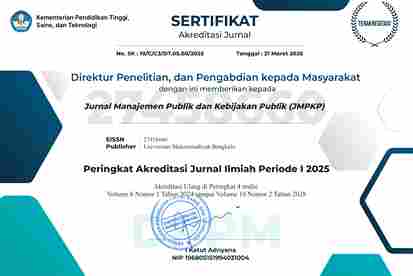Partisipasi Masyarakat Dalam Pengembangan Desa Wisata Gamplong
Keywords:
Desa Wisata; Partisipasi Masyarakat; Pemberdayaan MasyarakatAbstract
The diversity of Indonesian culture and local wisdom becomes promising tourism potential. The government must keep developing tourism by involving public’s participation. One of tourism development through tourism village such as in Sleman Regency of Special Province of Yogyakarta which grows impressively due to great natural potential. The number of tourism village in Sleman regency in 2018 are 36 villages. One of the villages is Gamplong tourism village which is located in Gamplong, Sumber Rahayu, Moyudan Sleman, Yogyakarta. The number of tourists in 2018 were 29.373 and remains unstable each month through good management. However, there is a problem in the management in which there is an unclear job division which only involves some of community members. The objective of the study is to analyze the form and level of community participation as well as public’s forcing and prohibiting factors in participating in the development of Gamplong tourism village. The study employed descriptive qualitative method and the setting was at Gamplong, Sumber Rahayu, Moyudan Sleman, Yogyakarta. The subjects of the study were community members of Gamplong tourism village. The study used data collection method in the form of observation, interview, and documentation, the data analysis technique was done through data collection, data reduction, data presentation and conclusion drawing. The result of the study revealed that community members participated in real participation through energy and properties and unreal participation through ideas. In addition, public’s participation level in plans and implementation was not optimum, while the result utilization and evaluation was considerably optimum. The result of the study also revealed factors influencing public’s participation. In brief, active community participation has been seen, but it still uncovers community participation as a whole. Community members should receive consistent training and clear job division









